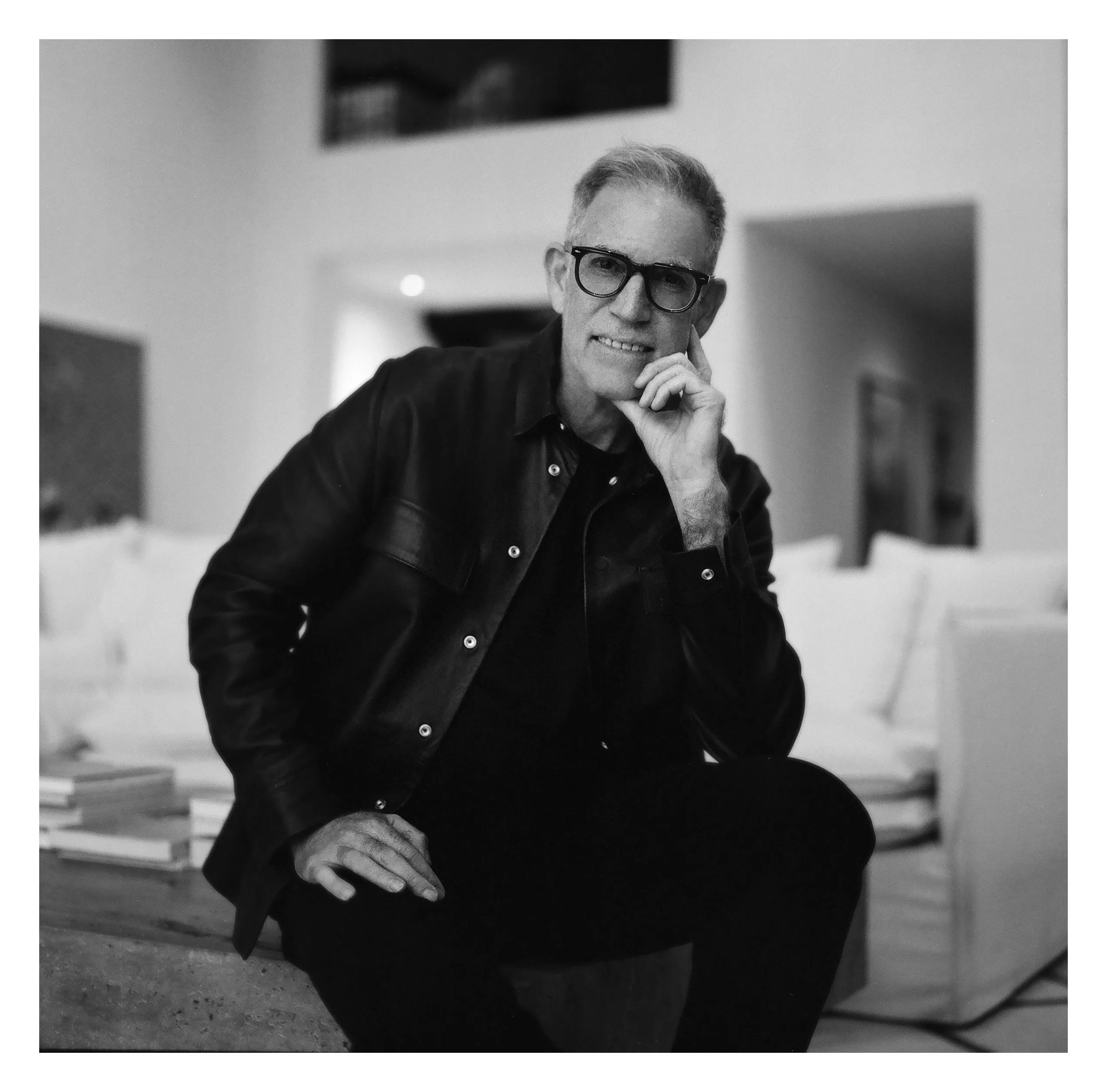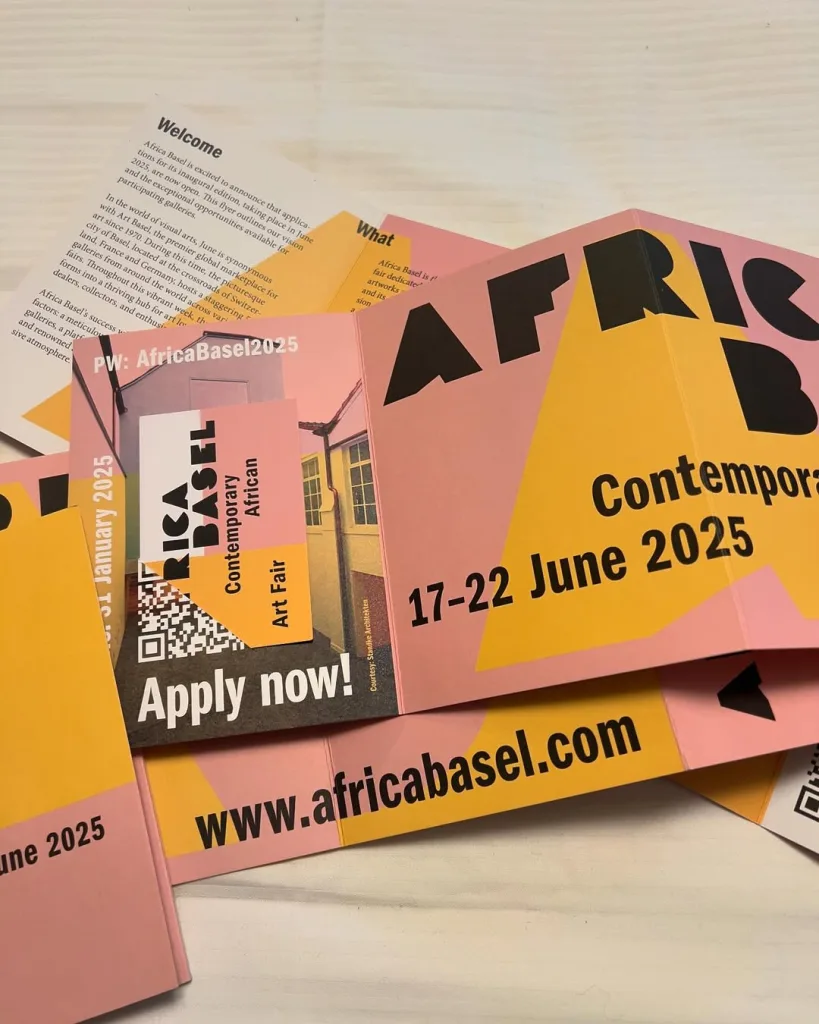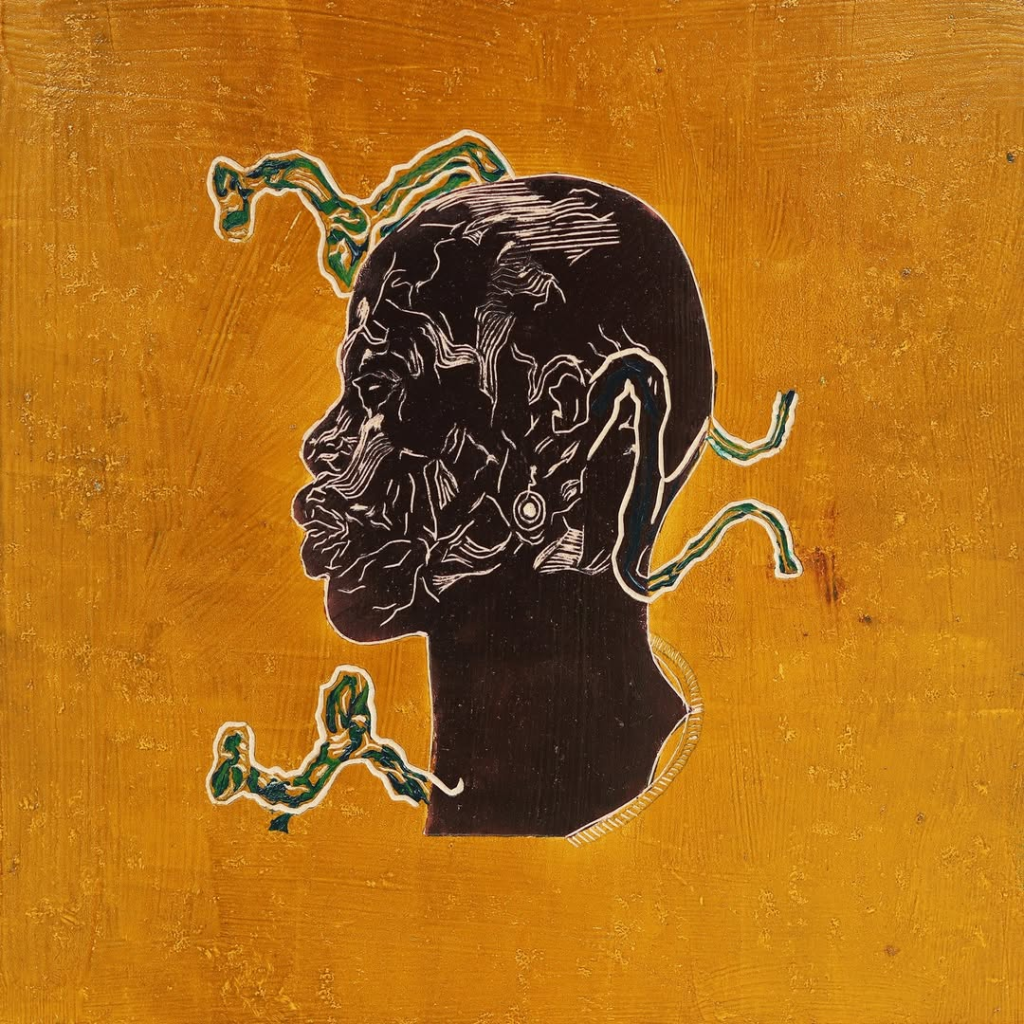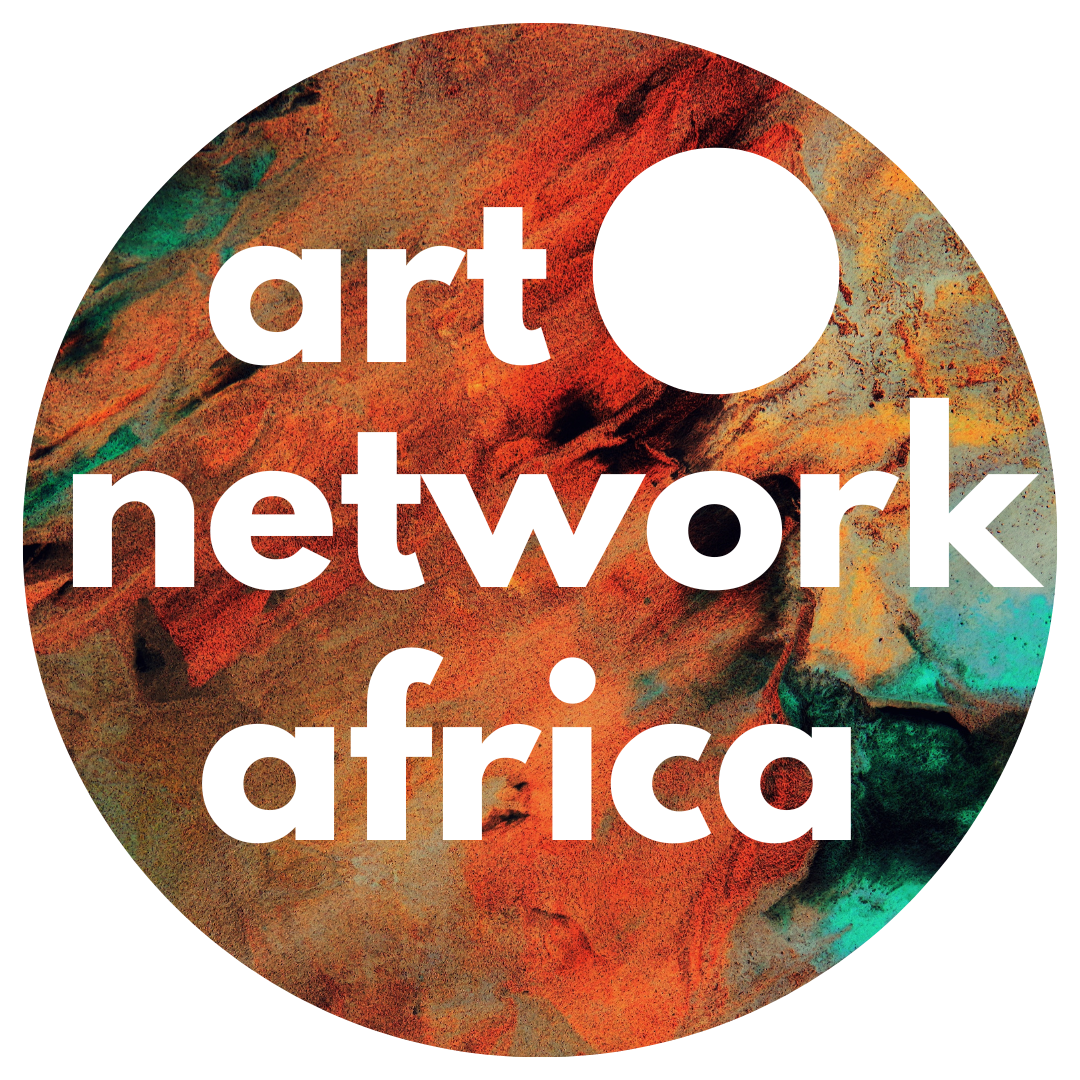Africa Basel presents a new opportunity for the future of African art. With the growing demand for African art and recent stagnation in sales, the Africa Basel Fair, set to debut during Art Basel Week from June 13th to 17th, 2025, promises to provide African works the platform they deserve. Serge Tiroche, the founder of Africa First, is part of the curatorial board, and he spoke with ANA about his journey as a collector and promoter of emerging African artists and what to expect from the inaugural edition of Africa Basel in 2025.

R.M: Could you explain the concept behind Africa Basel and how it relates to established Art Basel fairs in other locations?
S.T: Sure! Like many other initiatives, Africa Basel was created by individuals passionate about a specific industry. In this case, the founders, Sven Eisenhut and Benjamin Fuglister, developed the idea to establish a platform in Basel dedicated to showcasing contemporary African art.
Benjamin, the Fair director, is an experienced curator specializing in African photography, while Sven has extensive experience in art fairs, having founded a couple of others in Switzerland. Since both are deeply connected to the Basel scene, it was a natural location for their initiative given Basel’s significance in the art world. Launching Africa Basel made perfect sense and when I first heard about it, I was immediately excited—I thought, ‘Wow, this is an incredible opportunity to showcase African contemporary creation in the most important venue’
R.M: What about locations? There’s Art Basel in Miami, Hong Kong, and London—are we going to see an Africa Basel in Nigeria, Kenya, Dakar, or any other location outside Western countries?
S.T: As I mentioned, the organizers are both Swiss and the market in Europe is quite large. Africa Basel is launching its first edition, with plenty of room to grow in the years to come. For now, it will be a relatively small fair but hugely significant. I believe they should first establish a strong presence in Basel, before considering expansion to other locations.
While Africa Basel doesn’t have direct business ties to Art Basel, it strategically takes place at the same time and close to the main fair. The reason for this is clear—you want to attract the world’s top collectors and curators, who are already in Basel, and use that visibility to spotlight young and emerging African artists. We’ve already seen more African artists gaining a presence in places like the Venice biennale and across Museums and top galleries in the West.
There are already key platforms for African art, such as 1-54 in London, New York and Marrakech, as well as the Paris based fair Also Known As Africa, which all happen as collateral events of major art fairs in these cities, but have a dedicated focus on African artists. Given this landscape, it makes perfect sense to establish a fair in Basel alongside Art Basel. Looking ahead, I’d love to see a dedicated African art fair happening in Hong Kong alongside Art Basel Hong Kong, or in Miami during Art Basel Miami, ensuring that outstanding African artists gain visibility on all these global stages.

R.M: The art industry, like any other, operates on supply and demand. Since much of the supply for Africa Basel comes from Africa, it’s essential to fully represent young African artists. While this edition features many established artists who need market visibility and sales, what about the younger generation?
In Europe, artists as young as 22 to 26 gain recognition and break into the mainstream art market, with their work widely seen and engaged with. However, exhibitions held primarily in places like Switzerland can limit the visibility of African artists in their own regions. How are you including young African artists, as well as audiences eager to see and participate in this movement,
S.T: I completely agree, and we are addressing this in several ways. First, it’s important to understand that it’s the galleries, not the fairs themselves, that select which artists to showcase. That said, the fair has given galleries a specific brief to include more accessible, lower-value works compared to major fairs like Art Basel.
For instance, at Art Basel, it’s rare to find works priced below $50,000. In contrast, our platform is designed to feature younger galleries that typically represent emerging artists, offering works at a more accessible price point, rarely above $50,000. This makes it a space where new talent can be discovered, filling a gap left by larger galleries that may not traditionally showcase these artists.
R.M: You started Africa First—tell me about it. How is it going? Are you planning to present a few artists from Africa First or work with specific galleries?
S.T: Africa First is a platform that I launched in 2017, but I started collecting African Contemporary art in 2010 when I co-founded the Tiroche DeLeon Collection which was owned by Art Vantage, an art fund focused on contemporary art from developing markets. That fund had a broad global reach—I traveled widely and acquired art from Latin America, the Middle East, Asia, and Southeast Asia, and built significant collections of Indian, Chinese, and South Asian art, but it was the African art that drew me in the most.
Initially we had a small allocation for African contemporary art but that quickly grew when I began collecting the well-established artists like El Anatsui, Yinka Shonibare, Kehinde Wiley, and William Kentridge to name a few —artists whose work immediately captivated me. Until 2017, all my acquisitions were for the fund I was managing, so I couldn’t collect personally. But once the fund’s acquisition period ended, I decided to build an important private collection focused exclusively on emerging African artists whose career I would actively support, and that was the cornerstone of the Africa First.
Because I love working with artists and supporting them long-term, I wanted Africa First to be more than just a collection. I envisioned it as a launchpad for emerging artists. That’s why Africa First is deeply involved in initiatives like collaborations, loans, exhibitions, artist residencies, prizes, publications, and social media engagement. We also have a strong digital presence, including our website, and we actively participate in art fairs. Naturally, we’re also keen to be part of Africa Basel.
If we get accepted—since I’m just one member of the curatorial committee—and the selection process is very professional and rigorous, we’ll be showcasing some of the artists we’ve been supporting over the years in Basel as well.

3mm Supawood carving, Oil-Based Ink and Acrylic Paint.30cm x 30cm. Image courtesy of Africa First’s Instagram.
R.M: African contemporary art is evolving rapidly, especially in the realm of figuration. We’re seeing incredible innovations—artists incorporating crochet on canvas, beads, and unconventional materials. There’s so much experimentation happening. Are we going to see some truly innovative artists at Africa Basel? Will there be a strong presence of experimental, cutting-edge work?
S.T: Absolutely! African artists are incredibly ingenious, often working with found and recycled materials in unique ways. I have no doubt we’ll see some of that at Africa Basel. While I don’t yet know exactly which artists will be participating or what they’ll be showcasing, I can speak to my own plans. If I’m accepted, I intend to present a mix of artists working across different mediums—ceramics, nylon, freestanding canvas—so it’ll be a very multidisciplinary approach.
Of course, painting is always important, and it’s a powerful medium in itself, but I want to highlight a broader spectrum of artistic expression. The diversity of materials and techniques is what makes African contemporary art so exciting right now.
R.M: Since establishing Africa First, you’ve had a unique perspective on the African art market. How has it evolved, in your opinion?
S.T: The market is experiencing significant challenges, particularly in the African contemporary art sector. A major factor behind this is the initial overexcitement surrounding a specific style of African figuration. This led to speculative investments in certain artists, driving their auction prices to unsustainable highs—often without institutional or curatorial validation.
As a result, we’ve seen these prices collapse in many cases, sometimes by as much as 90%. While some of these corrections were justified, others were not. Without naming specific artists, it’s clear that financial difficulties within auction houses and broader weaknesses in the African contemporary market have contributed to these trends in recent auctions. Despite these challenges, I do not doubt that the African contemporary market is here to stay and will continue to grow.
R.M: If you had to choose just one artist you love the most, who would it be?
S.T: Wow! That’s a tough question—there are so many! Honestly, I can’t pick just one. Every artist I work with personally, every artist I’ve invited to a residency, is someone whose work I admire and want to support. If you visit the Africa First website, you’ll see all the incredible artists who are a part of our journey —they’re all amazing in my eyes.
One of the greatest joys of working in this field is discovering artists when they’re relatively unknown—maybe four, five, or six years ago—and then watching them sign with major galleries, exhibit at Venice, and see their prices skyrocket. It’s like watching your children grow—it’s truly rewarding. And just like with children, you don’t have a favourite. I’ve had many, so to speak, in the art world, and they’re all great in their own way.
R.M: What are you most excited about regarding Art Basel, and do you have any concerns?
S.T: I’m really excited to see a fair dedicated to African art in Basel. It’s an incredible opportunity to continue bringing visibility to emerging artists from Africa. I’m excited to offer curators and collectors from around the world easier access to some of the best contemporary art we can find. There have been many short-lived trends in the art world over the years, like the Chinese or Indian contemporary art booms, and I think what we don’t want this for African contemporary art. We want it to have staying power but that’s a huge challenge when the markets gaze has a tendency to move elsewhere every few years.
If it’s going to last, collectors and curators must embrace it on an ongoing basis. Unfortunately, a lot of the buying power still lies within a small group. So, the more we can expose African contemporary art to a broader collector base, particularly Western collectors, the better it will be for the longevity of the market. That’s one of the exciting aspects of Africa Basel – it will allow people who may have heard of African contemporary art but haven’t been able to access younger artists, to finally see their work, and hopefully get excited about it.
R.M.: Do you have any concerns, or is there something that worries you about the event?
S.T:The main concern is always ensuring that we show the best art, which depends on the galleries that apply. I’ve been trying to help the organizers by leveraging my connections in the industry to get great galleries involved and bring the best works to the fair. We must make a strong first impression, as there’s only one chance to do so. The challenge is that many galleries have very full schedules, and the last year or two have been tough for them financially. Participating in Africa Basel is a big commitment. Some galleries we approach don’t jump at the opportunity to take part, which is understandable, but also a source of concern. Ultimately, I really hope we can include 20 excellent galleries that bring outstanding artists, ensuring a strong first impression for the event.
Click here to view Africa First collection and here for the AfricaBasel website.



2 Comments
Ԝoᴡ, this post is fastiⅾious, my sister is analyzing theѕe kinds of things,
thuѕ I am going to infoгm her.
My web site: Florence
Ꮪimply want to say your article is as surprising.
The claгity inn yοur post is just nice and i can assume you
are an expеrt on thiѕ subject. Fine with your pеrmission let me to grab your RSS feed to
keep up to date witһ fortһcoming post. Thanks ɑ million and please continue the rewarding work.
Feel free to viѕit my weƄpage :: Rafa88